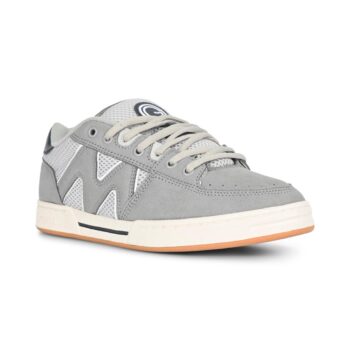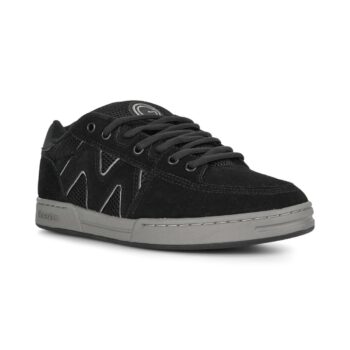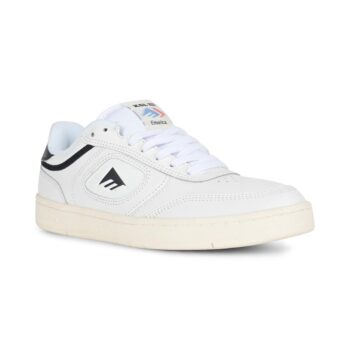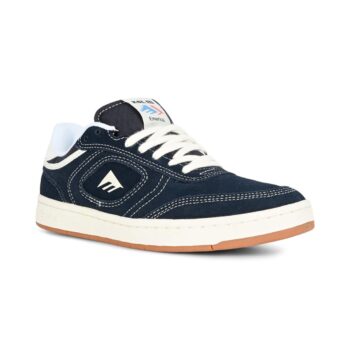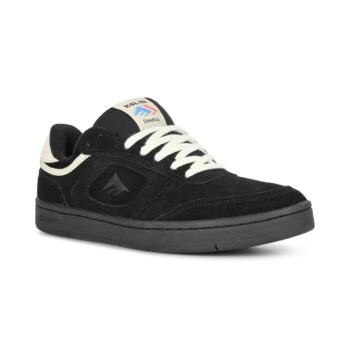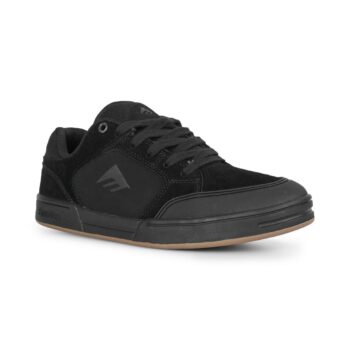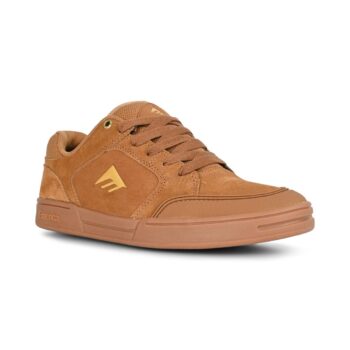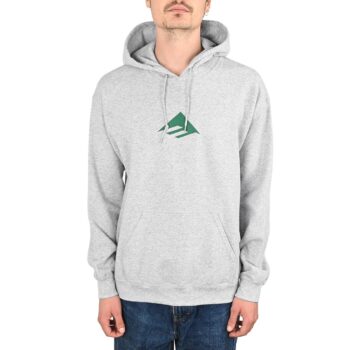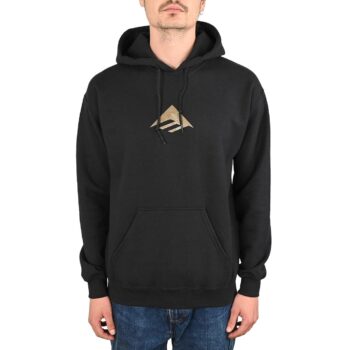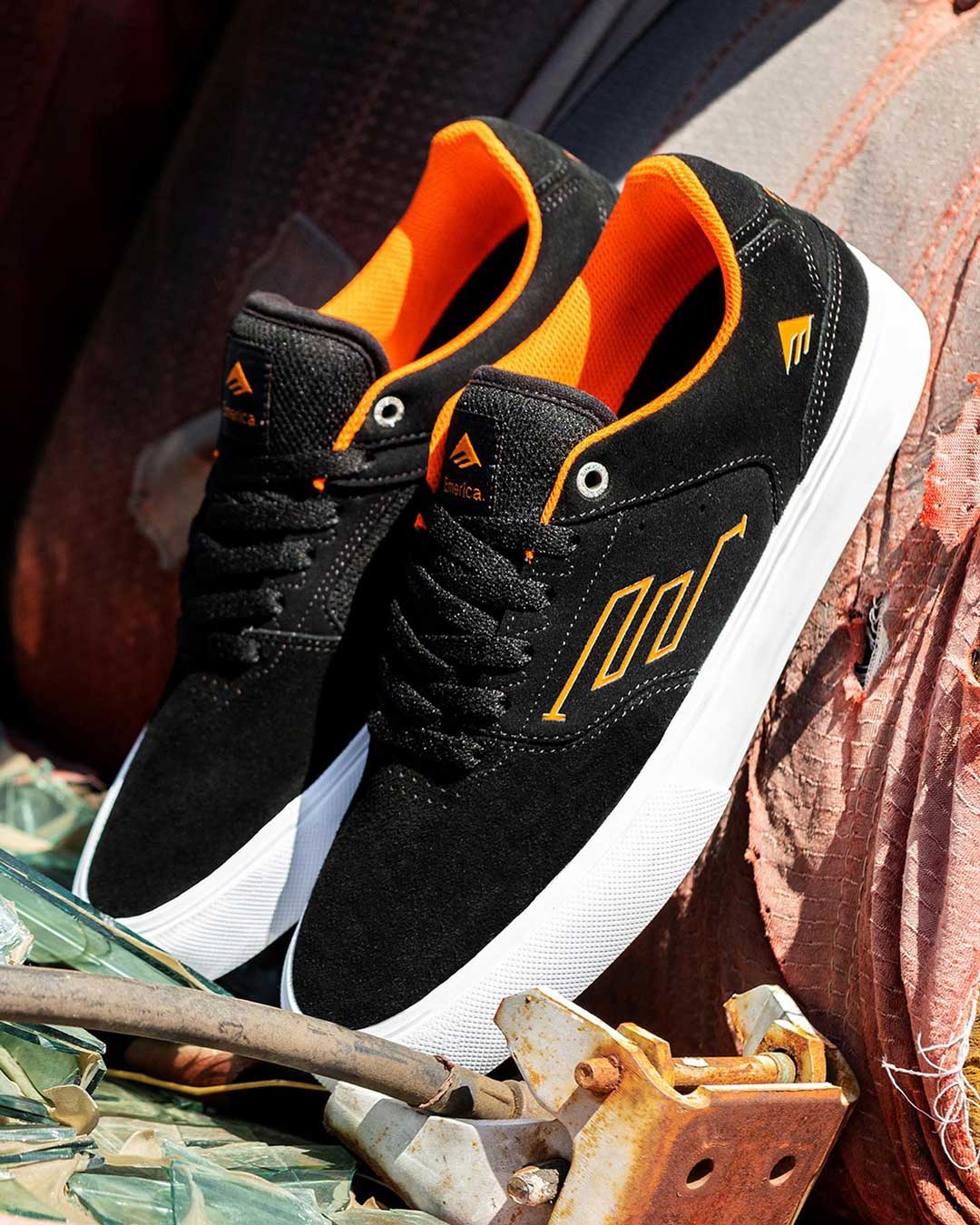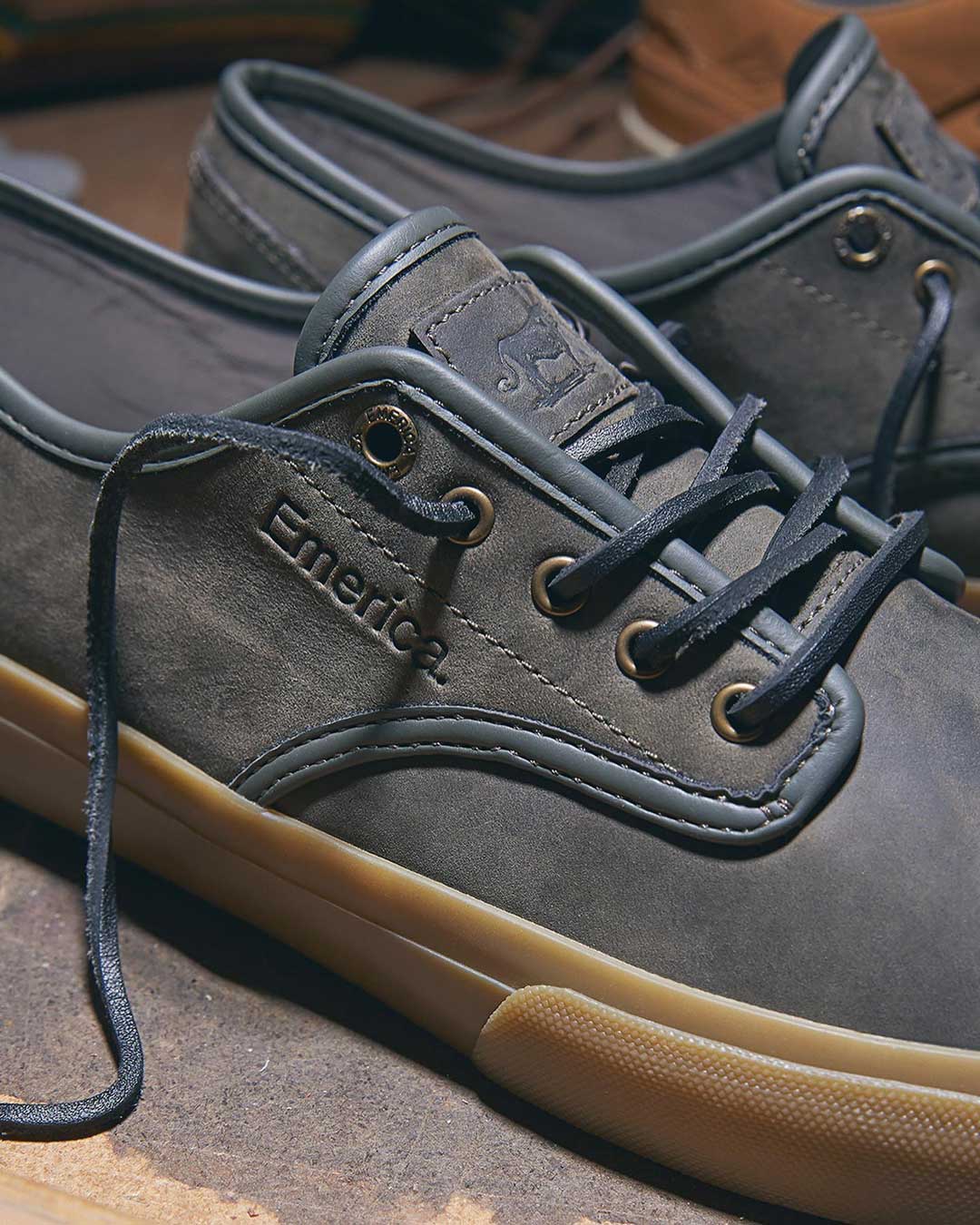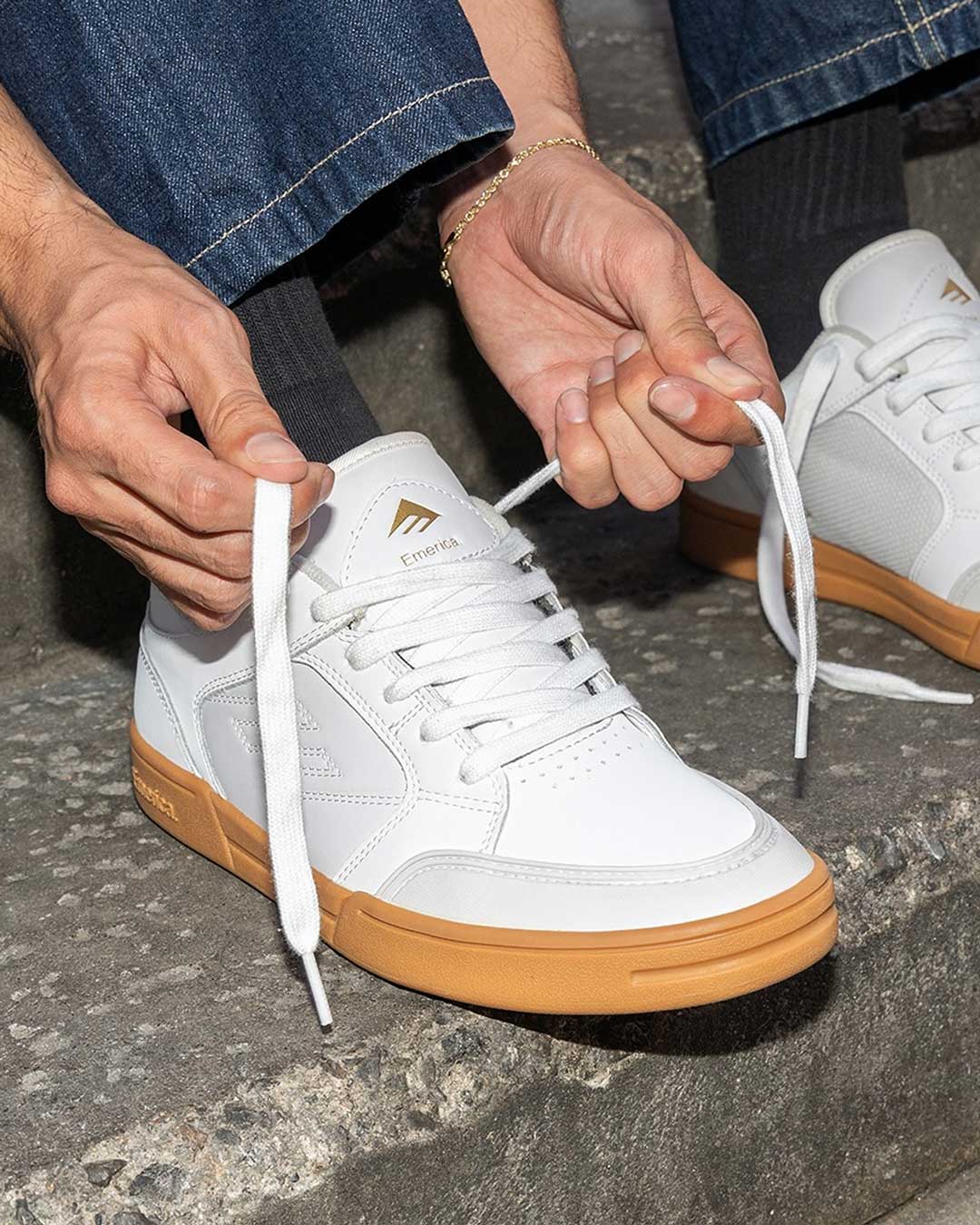Emerica's early days & legendary team
From the beginning, Emerica positioned itself as a rider-driven skate footwear brand. Its team roster of athletes has been stacked with legendary and influential skaters over the decades. Having Marc Johnson on the Emerica team during the late 1990s was a major asset for the brand as it established itself in the skateboarding world. Johnson was already gaining a reputation for his incredibly technical style, smooth execution, and thoughtful trick selection, traits that aligned perfectly with Emerica’s emphasis on raw, progressive street skating. His presence gave Emerica credibility among core skaters and helped position the brand as one that supported true innovators rather than just marketable names. His pro models brought attention to Emerica’s footwear quality and design, while his influence helped shape the brand’s early identity as a home for stylish, forward-thinking skaters. In many ways, Johnson’s time on Emerica helped lay the foundation for the brand’s legacy of supporting skaters who push creativity and progression.
Another key figure in Emerica’s legacy is Heath Kirchart, whose style and attitude embodied the brand’s darker, more mysterious aesthetic. Alongside him, Ed Templeton, who owned and rode for Toy Machine skateboards, was part of the foundational Emerica crew, bringing an artistic and punk influence to the team. Nowadays, Braden Hoban has quickly become one of the most exciting figures on Emerica’s skate team, known for his fearless approach to skating massive rails and creative, high-impact street lines. Since joining the brand, he has brought a fresh energy that aligns perfectly with its raw, no-nonsense skateboarding ethos. In 2024, Hoban was honoured with his first pro model shoe, the Hoban, which reflects his skating style with a durable vulcanised construction, reinforced stitching, and a sleek, low-profile design built for control and longevity.
Skate shoes for skateboarders
Emerica’s shoe catalogue has consistently included some of the most technically advanced and stylistically distinct models in skateboarding. The Reynolds series was always a benchmark, but other silhouettes like the Herman G6, Westgate, and the Romero Laced line stood out for their mix of board feel, support, and durable construction. The G6 series, in particular, became known for its impact-absorbing technology, a game changer for skaters throwing themselves down stair sets and gaps.
Emerica’s current skate shoe lineup is rooted in classic, functional design while integrating modern performance upgrades. Staples like the Romero Laced and Dickson continue to deliver reliable board feel and durability, with the Dickson featuring Flick Shield toe reinforcement and Desert Grip tread for maximum flick and grip. Other models like The Low Vulc, Cadence, and Heritic reflect Emerica’s focus on style and skate performance. The Low (originally called The Reynolds Low) offers a clean, minimalist profile with a vulcanised sole for flexibility and precise board control. The Cadence features reinforced stitching and a padded collar for comfort and support, blending a heritage look with modern durability. The Heritic, a reimagined classic, brings a chunkier, late-’90s silhouette with updated materials and cushioning, perfect for skaters who want a throwback look with today’s tech. The current line offers a mix of cupsole and vulc constructions, focusing on versatility, toughness, and style that speaks directly to real skaters.
Pivotal skate videos
Emerica's full-length skate videos are equally vital to its identity, helping define eras and inspire generations. "This Is Skateboarding," released in 2003, is arguably their most impactful contribution. Filmed and edited by Jon Miner with the help of Mike Manzoori, the video is a time capsule of early-2000s skateboarding, with memorable parts from Reynolds, Kirchart, Herman, and many others. It featured a raw, cinematic style that set it apart from other skate videos of the time.
A few years later, “Stay Gold”, released in 2010, elevated Emerica's video legacy even further. Stay Gold wasn’t just an important skate video—it was a defining moment in modern skateboarding that solidified its place in the culture, whilst the internet was rapidly changing how skateboarding was consumed.
Full-length videos were beginning to compete with the rise of online clips and parts. Stay Gold proved that cinematic, team-based skate videos could still carry immense cultural weight. Again, directed by Jon Miner, the film had a gritty, serious tone mirroring Emerica’s raw, core-skateboarding identity, with powerful visuals and a cohesive atmosphere that felt like a love letter to street skating. The line-up was deep and stacked with talent, showcasing some of the most memorable parts of the era. Andrew Reynolds delivered a career-defining section that showcased his evolution as a skater, combining style and power in a way that reminded everyone why he is a legend. Jerry Hsu’s part was technically brilliant and emotionally charged, while Brandon Westgate’s explosive speed and aggression made him an instant standout.
Through all its evolution, Emerica has never lost sight of its roots. While trends in the skate shoe market have come and gone, the brand has maintained its commitment to raw skateboarding and functional design. Its rider-first mentality and tight visual identity have earned it a loyal following and a permanent place in skateboarding history.
